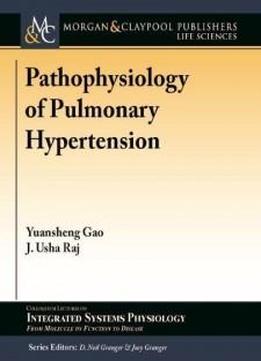
Pathophysiology Of Pulmonary Hypertension (colloquium Series On Integrated Systems Physiology: From Molecule To Function To Disease)
by Yuansheng Gao /
2017 / English / PDF
1.4 MB Download
Pulmonary hypertension is a life-threatening disease with no known
cure. Here we provide a concise yet comprehensive review of the
current knowledge about the pathophysiology of pulmonary
hypertension (PH). The underlying signaling mechanisms involved in
pulmonary vascular remodeling and the exaggerated vascular
contractility, two characteristic features of pulmonary
hypertension, are discussed in depth. The roles of inflammation,
immunity, and right ventricular function in the pathobiology of
pulmonary hypertension are discussed. The epidemiology of the five
groups of pulmonary hypertension (World Health Organization
classification; Nice, 2013) is also briefly described. A clear
understanding of our current knowledge about the pathogenesis of PH
is essential for further exploration of the underlying mechanisms
involved in this disease and for the development of new therapeutic
modalities. This book should be of interest to researchers and
graduate students, both in basic research and in clinical settings,
in the fields of pulmonary vascular biology and pulmonary
hypertension.
Pulmonary hypertension is a life-threatening disease with no known
cure. Here we provide a concise yet comprehensive review of the
current knowledge about the pathophysiology of pulmonary
hypertension (PH). The underlying signaling mechanisms involved in
pulmonary vascular remodeling and the exaggerated vascular
contractility, two characteristic features of pulmonary
hypertension, are discussed in depth. The roles of inflammation,
immunity, and right ventricular function in the pathobiology of
pulmonary hypertension are discussed. The epidemiology of the five
groups of pulmonary hypertension (World Health Organization
classification; Nice, 2013) is also briefly described. A clear
understanding of our current knowledge about the pathogenesis of PH
is essential for further exploration of the underlying mechanisms
involved in this disease and for the development of new therapeutic
modalities. This book should be of interest to researchers and
graduate students, both in basic research and in clinical settings,
in the fields of pulmonary vascular biology and pulmonary
hypertension.











